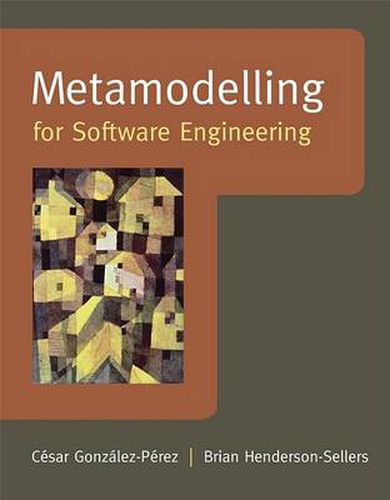Readings Newsletter
Become a Readings Member to make your shopping experience even easier.
Sign in or sign up for free!
You’re not far away from qualifying for FREE standard shipping within Australia
You’ve qualified for FREE standard shipping within Australia
The cart is loading…






This book focuses on metamodelling as a discipline, exploring its foundations, techniques and results. It presents a comprehensive metamodel that covers process, product and quality issues under a common framework. This book covers issues including: an explanation of what metamodelling is and why it is necessary in the context of software engineering; basic concepts and principles of traditional metamodelling, and some existing results of this approach; problems associated with traditional approaches to Metamodelling are discussed, alongside an exploration of possible solutions and alternative approaches; and, advanced topics such as the extension of the object-oriented paradigm for metamodelling purposes or the foundations of powertype-based tool development will be studied. Finally, a comprehensive case study is introduced and developed, showing how to use many of the concepts explained in the previous chapters. This book provides a comprehensive conceptual framework for metamodelling and includes case studies and exercises which will demonstrate practical uses of metamodelling. For lecturers and educators, this book provides a layered repository of contents, starting from the basics of metamodelling in the first chapters, through specific issues such as trans-layer control or non-strict approaches, up to advanced topics such as universal powertyping or extensions to the object-oriented paradigm. This book also serves as an in-depth reference guide to features and technologies to consider when developing in-house software development methods or customising and adopting off-the-shelf ones. Software tool developers and vendors can benefit from the book by finding in it a comprehensive guide to the implementation of frameworks and toolsets for computer-aided software modelling and development.
$9.00 standard shipping within Australia
FREE standard shipping within Australia for orders over $100.00
Express & International shipping calculated at checkout
This book focuses on metamodelling as a discipline, exploring its foundations, techniques and results. It presents a comprehensive metamodel that covers process, product and quality issues under a common framework. This book covers issues including: an explanation of what metamodelling is and why it is necessary in the context of software engineering; basic concepts and principles of traditional metamodelling, and some existing results of this approach; problems associated with traditional approaches to Metamodelling are discussed, alongside an exploration of possible solutions and alternative approaches; and, advanced topics such as the extension of the object-oriented paradigm for metamodelling purposes or the foundations of powertype-based tool development will be studied. Finally, a comprehensive case study is introduced and developed, showing how to use many of the concepts explained in the previous chapters. This book provides a comprehensive conceptual framework for metamodelling and includes case studies and exercises which will demonstrate practical uses of metamodelling. For lecturers and educators, this book provides a layered repository of contents, starting from the basics of metamodelling in the first chapters, through specific issues such as trans-layer control or non-strict approaches, up to advanced topics such as universal powertyping or extensions to the object-oriented paradigm. This book also serves as an in-depth reference guide to features and technologies to consider when developing in-house software development methods or customising and adopting off-the-shelf ones. Software tool developers and vendors can benefit from the book by finding in it a comprehensive guide to the implementation of frameworks and toolsets for computer-aided software modelling and development.